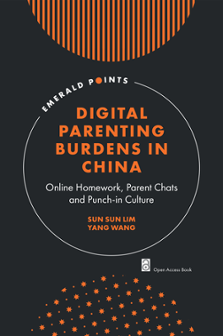
Index
Digital Parenting Burdens in China: Online Homework, Parent Chats and Punch-in Culture
ISBN: 978-1-83797-758-1, eISBN: 978-1-83797-755-0
Publication date: 6 June 2024
Citation
Lim, S.S. and Wang, Y. (2024), "Index", Digital Parenting Burdens in China: Online Homework, Parent Chats and Punch-in Culture, Emerald Publishing Limited, Leeds, pp. 91-96. https://doi.org/10.1108/978-1-83797-755-020241009
Publisher
:Emerald Publishing Limited
Copyright © 2024 Sun Sun Lim and Yang Wang
License
This work is published under the Creative Commons Attribution (CC BY 4.0) licence. Anyone may reproduce, distribute, translate and create derivative works of this work (for both commercial and non-commercial purposes), subject to full attribution to the original publication and authors. The full terms of this licence may be seen at http://creativecommons.org/licences/by/4.0/legalcode
INDEX
See also Digital technologies
- Prelims
- 1. Digital Parenting: Why the Chinese Experience Matters
- 2. Digitalisation of Family Life in China
- 3. Parental Accountability and Punch-In Culture
- 4. Performative Parenting and Peer Pressure
- 5. Digital Parenting Burdens and Family Wellbeing
- About the Authors
- Glossary of Chinese Terms
- References
- Index